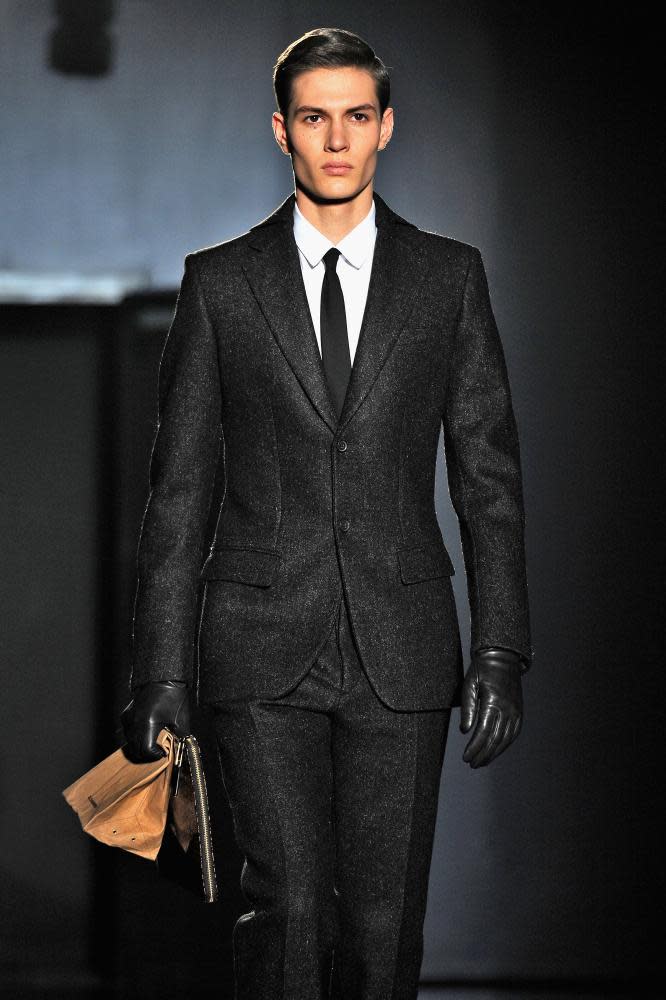The rise of the main character accessory
Pigeons have been waiting a while for their fashion moment. But this autumn, the undisputed bag of the season is a resin replica of a pigeon made by the Irish designer JW Anderson, yours for £795.
That’s if you can get your hands on one. The pigeon already has a waiting list on the brand’s site (where it was the most viewed item in August), and is sold out on Net-a-Porter. And that was before Sarah Jessica Parker was spotted with the pigeon this week on the set of the new season of And Just Like That…. On TikTok, an unboxing video of the pigeon has more than 27,000 views.
The pigeon may be a bag but it isn’t a bag with any practical purpose. Hollow inside, it has space to carry perhaps a credit card and some lip balm. Instead, this is a prop, a stunt, a meme come to life. Less a bag and more a main character accessory.
Other similar designs vying for attention? Balenciaga’s “trash” bag for £1,290, a solid gold bag on the Coperni catwalk worth €100,000 (£87,928) and Louis Vuitton’s bag designed to resemble a paint can, which retails at £1,980.
The idea of a bag that doesn’t serve the purpose of a bag might seem odd. But to Charlie Porter, the author of What Artists Wear, their appeal is “novelty – with this double meaning because novelty means new as well as meaning kind of ‘ha ha’. Brands have to create novelty and newness.”
Indeed, handbags are having a bit of a tricky time at the moment. Once the hardest working items we owned, it is now possible to leave the house with just your smartphone.
Jacquemus was the first modern designer to respond to this with its minibag. Despite its diminutive 9cm x 12cm size, the Mini Le Chiquito was figuratively huge when it came out in 2019 – when the practical concerns of actually carrying stuff are a thing of the past, why not carry something fun instead?
The fun bag trend goes beyond lifestyle changes, though. Absurdist bags are part of a wider shift in fashion towards items and designs that play well in a culture replete with the visual gags of memes. This ranges from Viktor & Rolf’s dresses from 2019 with slogans such as “Sorry I’m late I didn’t want to come” to Balenciaga’s oversized suit, as worn by Justin Bieber to the Grammys this year, and £1,200 shoes by Loewe (also designed by Anderson) where the spike heel goes through what looks like a broken egg.
Reilly, the artist behind popular fashion meme Instagram account @heyreilly, says memes are now “a formative part of public discourse [and] a great way for brands to create more interest in what they are doing”. Indeed, these online moments sell units. While not everyone will buy the trash bag, it could well send them to the Balenciaga site.
Minibags first emerged in the late 18th century. Called reticules, these were small ornamental bags. The size was soon the subject of satirists’ derision – and nicknamed “ridicules”.
For decades, Judith Leiber made bags depicting normal things out of crystal, for four figure prices. It was one of Leiber’s bags that became a storyline on Sex and the City, when Carrie is outraged that Mr Big gives her a crystal duck bag. Fast-forward a couple of decades, and a few fashion trends, and Carrie is happily carrying a pigeon.

In more recent years, Raf Simons put paper shopping bags on the catwalk in 2012, selling coated versions of the disposable items for $290 (£260). At Celine in 2013, Phoebe Philo made a collection using the checks familiar from the kind of bags you lug to the launderette. Demna Gvasalia has long taken this approach – in 2017 he produced a blue holdall that looked very much like the Ikea Frakta bag.
Porter also argues that these main character accessories disrupt the “gendered mess of the handbag”. He points to how women working in factories in the second world war were emancipated by pockets, only for the fashion industry to “force women back to being gendered, and carrying their stuff in a nice handbag” after the war ended. When that nice handbag is a pigeon facsimile, the ridiculousness of the item puts all of these constructs in disarray.
You could say these bags mirror the art world’s love of taking images out of context, as with Duchamp’s urinal in 1917, Dalí’s 1938 sofa designed in honour of Mae West’s lips, or Elsa Schiaparelli’s mind-bendingly modern shoe hat from 1937. Kathryn Johnson, curator of Objects of Desire, a new exhibition on surrealist design at the Design Museum, sees the parallels. “These pieces are made in spirit of provocation, daring and fun that is recognisably surrealist,” she says. “[It’s] elevating ordinary and overlooked or devalued objects to the status of treasures.”
They also nod to Andy Warhol with his 1960s soup cans and Brillo boxes. However, while Warhol elevated the unremarkable items that make our domestic lives work (soup nourishes, Brillo cleans), the pigeon and the rubbish bag are on the dirtier, grubbier side of our existence. Gvasalia went further with his show at Paris fashion week this month. Models strode a catwalk of mud, with bags made of the teddybears you might find in a skip.
This is perhaps the ultimate stunt: making a main character accessory – one likely to sell for thousands of pounds – look like rubbish. Johnson believes this is, again, in line with surrealism. “It doesn’t minimise or shy away from the darker side of life, it’s not escapist, but it sticks up for the importance of art and design in these times,” she says. “To quote Dorothea Tanning: ‘Art has always been the raft on to which we climb to save our sanity. I don’t see a different purpose for it now.’”


